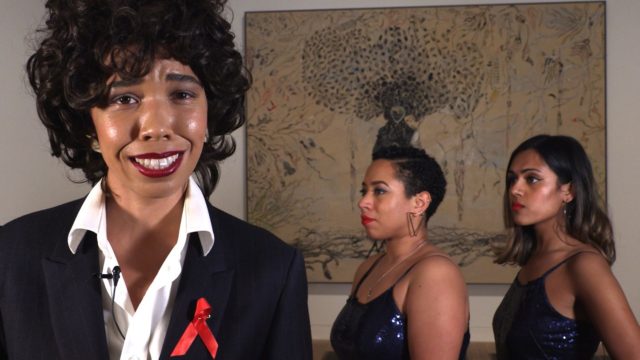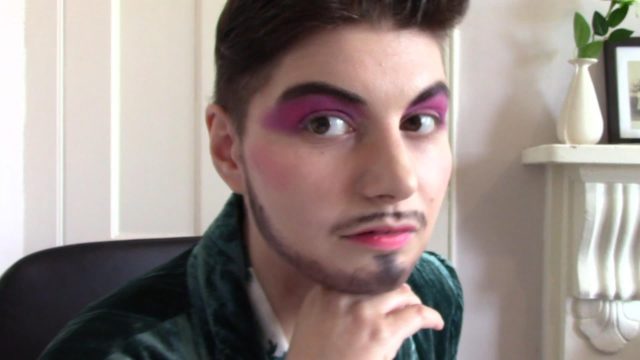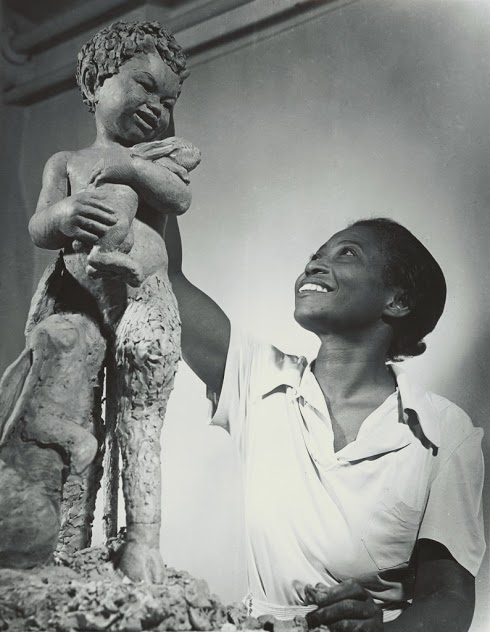
Inspired by ideas raised by Adam Pendelton’s Black Dada Reader – a text assembled from photocopies of work by a range of artists/writers/poets, such as Hugo Ball, Gertrude Stein, June Jordan, Amiri Baraka, and Deleuze.
Through these radical juxtapositions, Pendleton deconstructs the archive and disorients the reader, forcing a confrontation with the gaps and contradictions inherent in the assemblage.
We’d like to put this technique into practice in the salon and explore ways of re-radicalising avant-garde strategies through processes of queering, decolonising and deconstructing archives and institutions.
Rosa-Johan Uddoh (b.1993, Croydon) is an interdisciplinary artist working towards radical self-love, inspired by black feminist practice and writing. Through performance, installation, ceramics, video and sound, she explores an infatuation with places, objects or celebrities in British popular culture, and the effects of these on self-formation. Rosa is currently doing the 2020 Stuart Hall Library Residency and is a lecturer in Performance at Central Saint Martins.

Performing Whitness 2 (Mews)
^ Studies for Impartiality: The exhibition stages multi-faceted imagery of Moira Stuart; the first black, female newsreader to appear on British television when she began working for BBC News in 1981. Through Stuart, Uddoh furthers her research into leading broadcasting figure Una Marson, a Jamaican feminist, activist and writer, and the first Black woman to be employed by the BBC during World War II.
Janyce Denise Glasper is a multidisciplinary artist, writer, and independent scholar. She has a BFA in drawing from the Art Academy of Cincinnati and post baccalaureate and MFA from the Pennsylvania Academy of the Fine Arts. She currently lives and works in Dayton, Ohio and blogs at AfroVeganChick, femfilmrogues, and Black Women Make Art.
“I grew up on the white male artist cannon—Picasso, Matisse, Van Gogh, the Ninja Turtles (Da Vinci, Michelangelo, Donatello, and Rafael), Chagall, and countless others. There are thousands of books, documents, films, and other media dedicated to immortalizing their contributions to the art world.
However, to find other visual artists who looked like me— a Black woman— were limiting. It was like searching through mountains of sugary cereal to find the prize. I ate and ate and ate more until at last finding what was needed to enrich my mind— researching close to 400 Black women visual artists from across the globe. It had to be shared.
The purpose of the Black Women Make Art (BWMA) Database is to open up eyes and minds to the rich vastness of Black women visual artists from the past to present, working in all disciplines– painting, drawing, printmaking, sculpture, photography, digital art, performance, etc. These Black women visual artists work diligently, incorporating the African diaspora in uniquely instrumental ways, influenced by daily life, ancestral heritage, travels, pattern, shape, everything around them. They remix traditional techniques or continue carrying indigenous methods using visual ideas of figurative exploration, abstraction, technology, science, history, and other subjects— their visions are multifaceted, endlessly inspiring.
Khairani Barokka (b. Jakarta, 1985) is a writer, poet and artist in London. Among her honours, she was an NYU Tisch Departmental Fellow for her masters at ITP, and Indonesia’s first Writer-In-Residence at Vermont Studio Center. She was Modern Poetry in Translation’s Inaugural Poet-in-Residence, and is currently Researcher-in-Residence and Research Fellow at University of the Arts London’s Decolonising Arts Institute.

Elisa Adami is the Researcher-in-Residence at the UAL’s Decolonising the Arts Institute. She is also a writer and scholar based in London. Her writings on art and cultural theory have appeared in academic journals and art magazines such as the Journal of Visual Culture, Third Text, Art Monthly, Ibraaz and Flash Art. She lectures in the school of Fine Art and Art History at Kingston University. Her current research focuses on questions of history writing in the practice of a selected number of Lebanese artists of the postwar generation.
Decolonial Dovetailing: Potential Encounters and Archival Elisions in Thorold Dickinson’s Archive
In the archives, stories are kept separate, segregated. Black agency often features only as an elision. These archival conditions determine the kind of stories we tell, the narratives we reproduce.
In December 1937, at the London Film Society, film director Thorold Dickinson presented an anti-colonial program that ‘dovetailed’ alternate reels from Italian and Soviet propaganda films depicting the brutal Fascist invasion of Ethiopia, initiated in October 1935.
In those very years, London became an incubator for radical black internationalism and Pan-African movements, which organized in support of the Ethiopian cause and were spearheaded by the likes of C.L.R. James, Amy Ashwood Garvey and George Padmore.
While closely connected, these two stories do not meet in the archives. In my work on Thorold Dickinson archive at the UAL’s Archive and Special Collection Centre, I adopt Dickinson’s rhetorical device of dovetailing – the suturing or juxtaposition of images taken from different reels – to expand on what is not in the archive (unearthing potential encounters), and to deconstruct what is there (revealing archival elisions).
^ C.L.R. James speaking at a rally in support of Abyssinia in Trafalgar Square, 1935.
Claire Mead is a European Franco-British art and design curator and queer feminist activist working in London. She is the public programme manager for Makerversity at Somerset House. Campaigning for queer visibility within museums has led Claire to working with numerous institutions and organisations.

The Delacroissant Debrief: Drag Museum Director Tutorial
Jay Bernard (FRSL FRSA) is a writer from London. Their work is interdisciplinary, critical, queer and rooted in the archive. They won the 2018 Ted Hughes Award for Surge: Side A, a cross-disciplinary exploration of the New Cross Fire in 1981.

So Mayer is a UK-based writer, editor, educator and activist with a passionate commitment to arts and social justice. They publish with independent presses Arc, Lark Books, Salt, Shearsman, IB Tauris, and Wallflower. They are a member of queer feminist film curation collective Club des Femmes and feminist film activists Raising Films, a lecturer in film at LCC and Queen Mary University of London, and a film journalist for Sight & Sound and The F-Word, where they focus on independent, experimental, and feminist films and film culture.





















